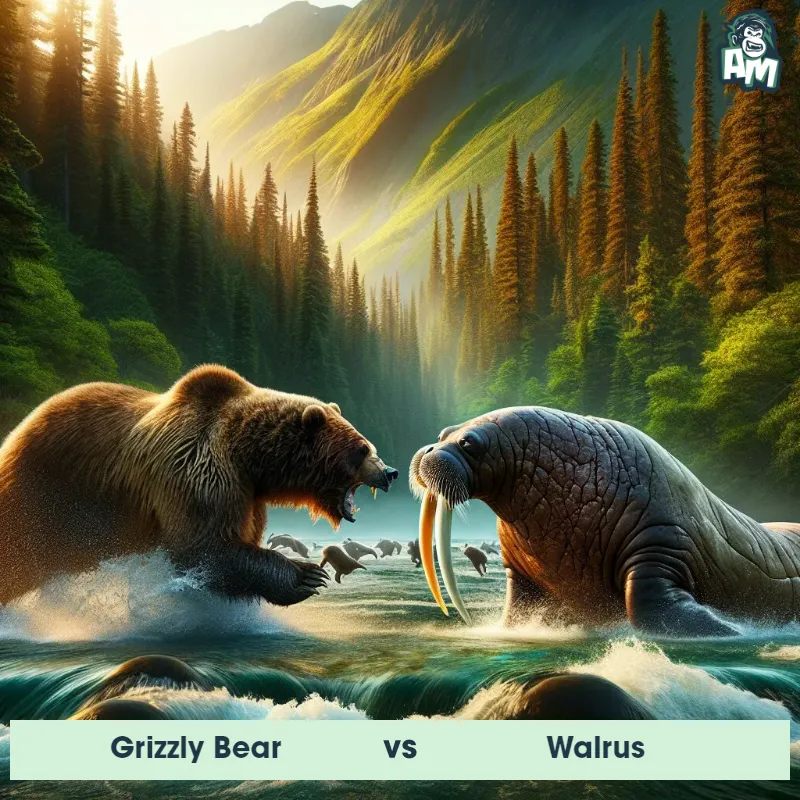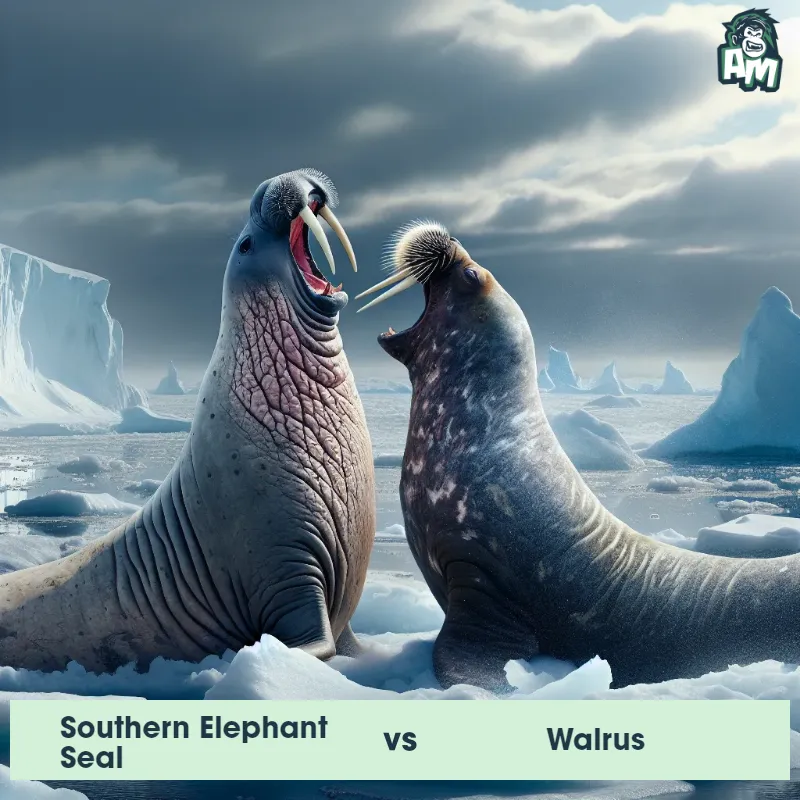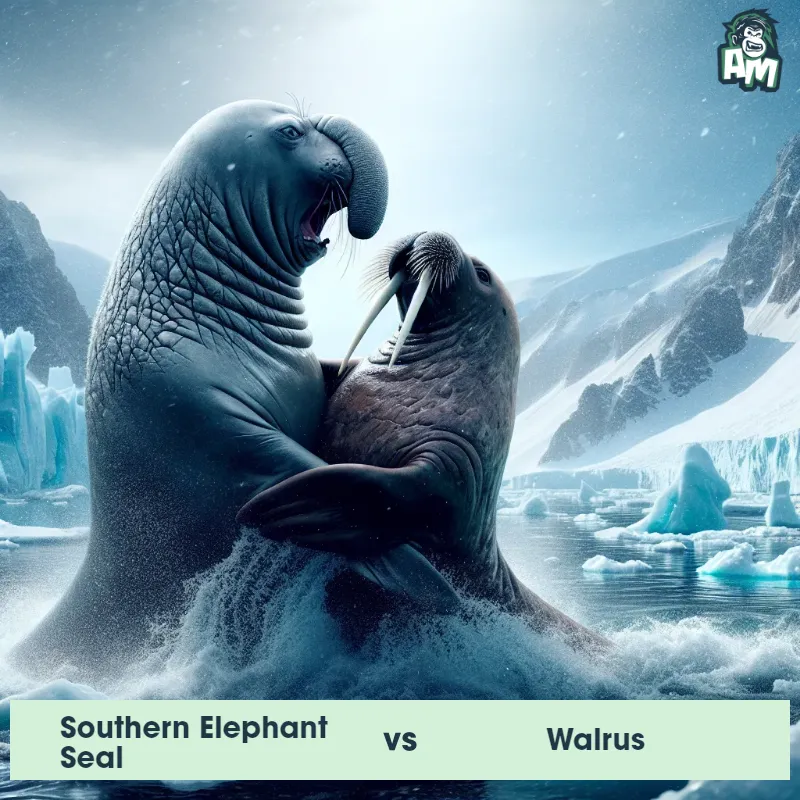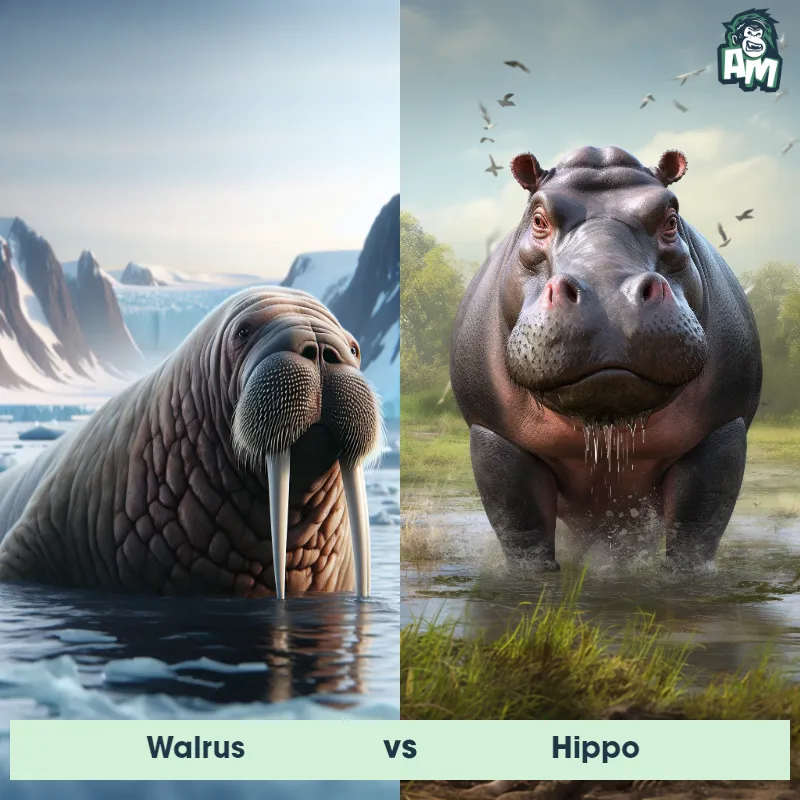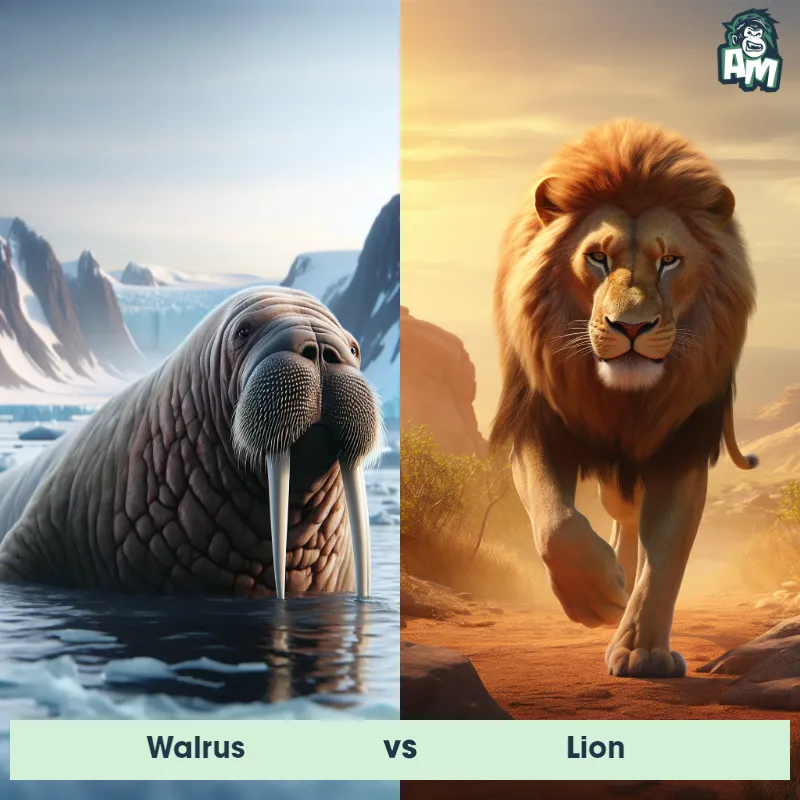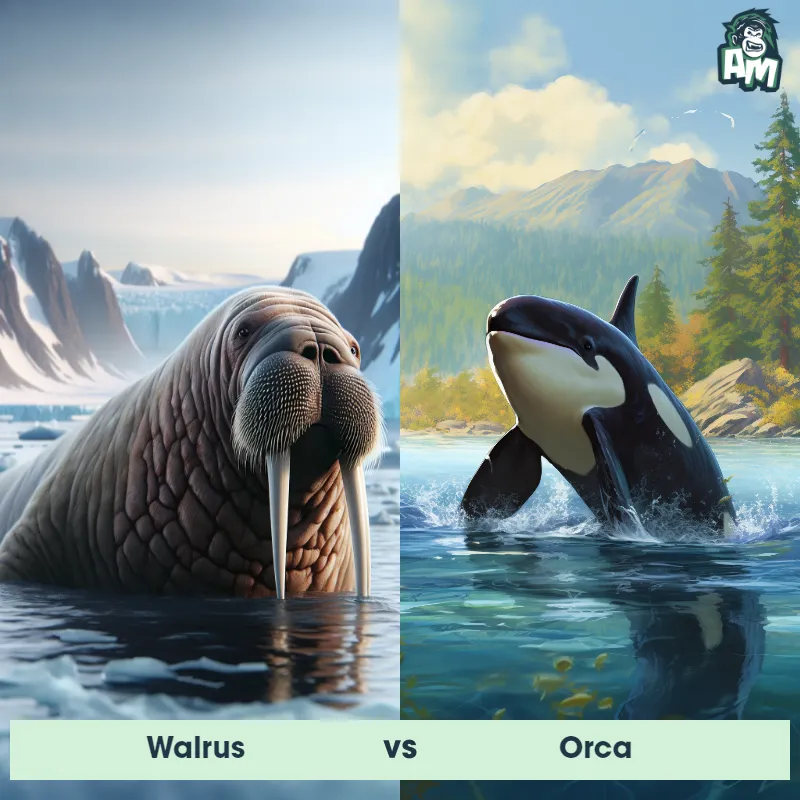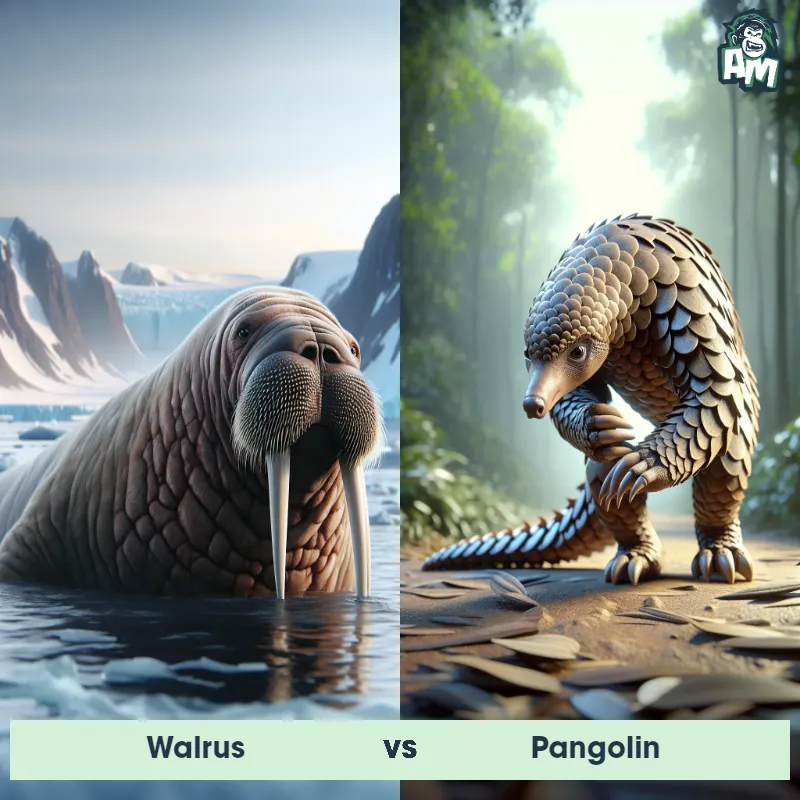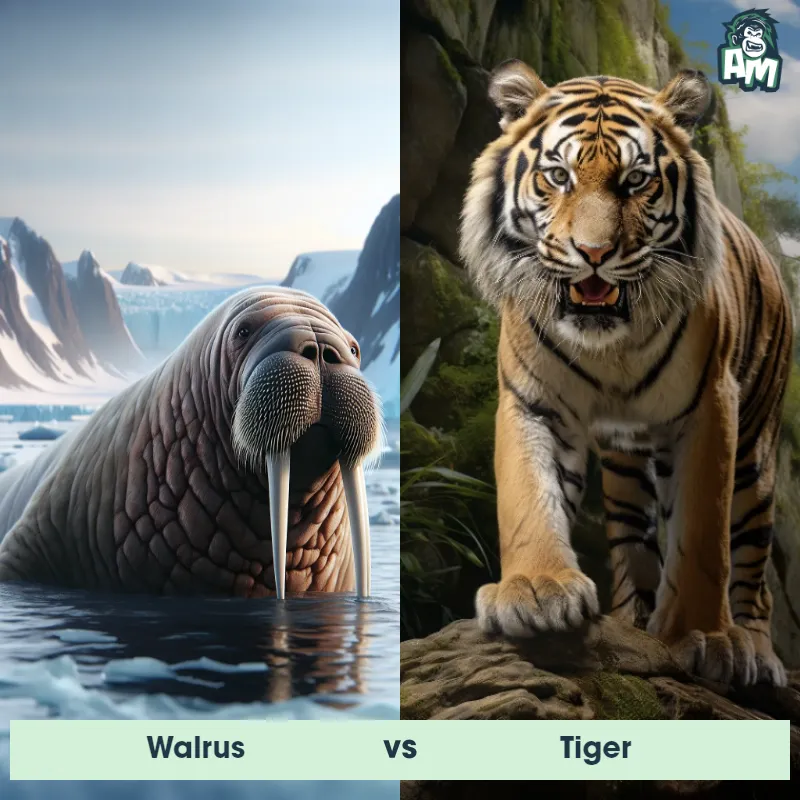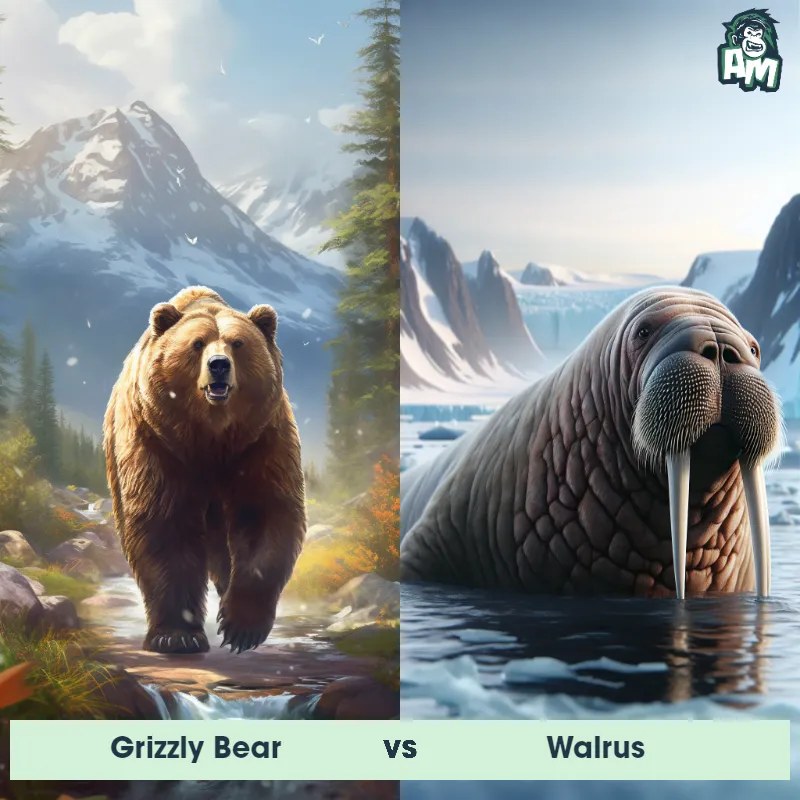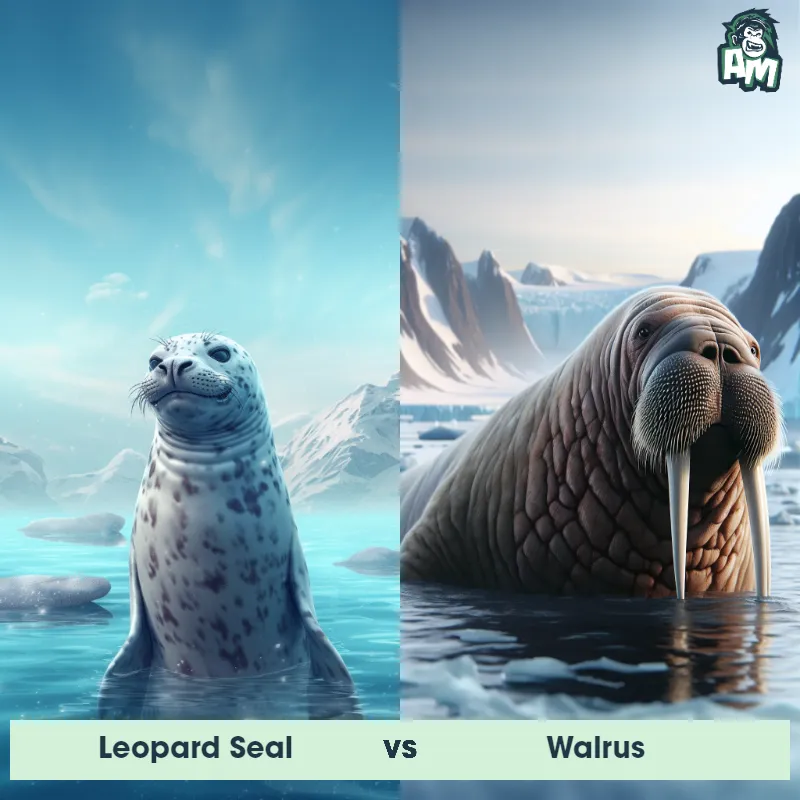The Walrus
The Walrus is a large marine mammal that belongs to the pinniped family. It is known for its distinctive long tusks, which can grow up to three feet in length. With a bulky body covered in thick blubber, the Walrus can weigh up to 4,000 pounds. They have a flabby appearance with wrinkled skin, which is often pale brown or pinkish-gray in color. Walruses use their strong flippers to navigate in water and haul themselves onto ice floes. These social creatures are found in the Arctic regions, where they gather in large groups called haulouts.
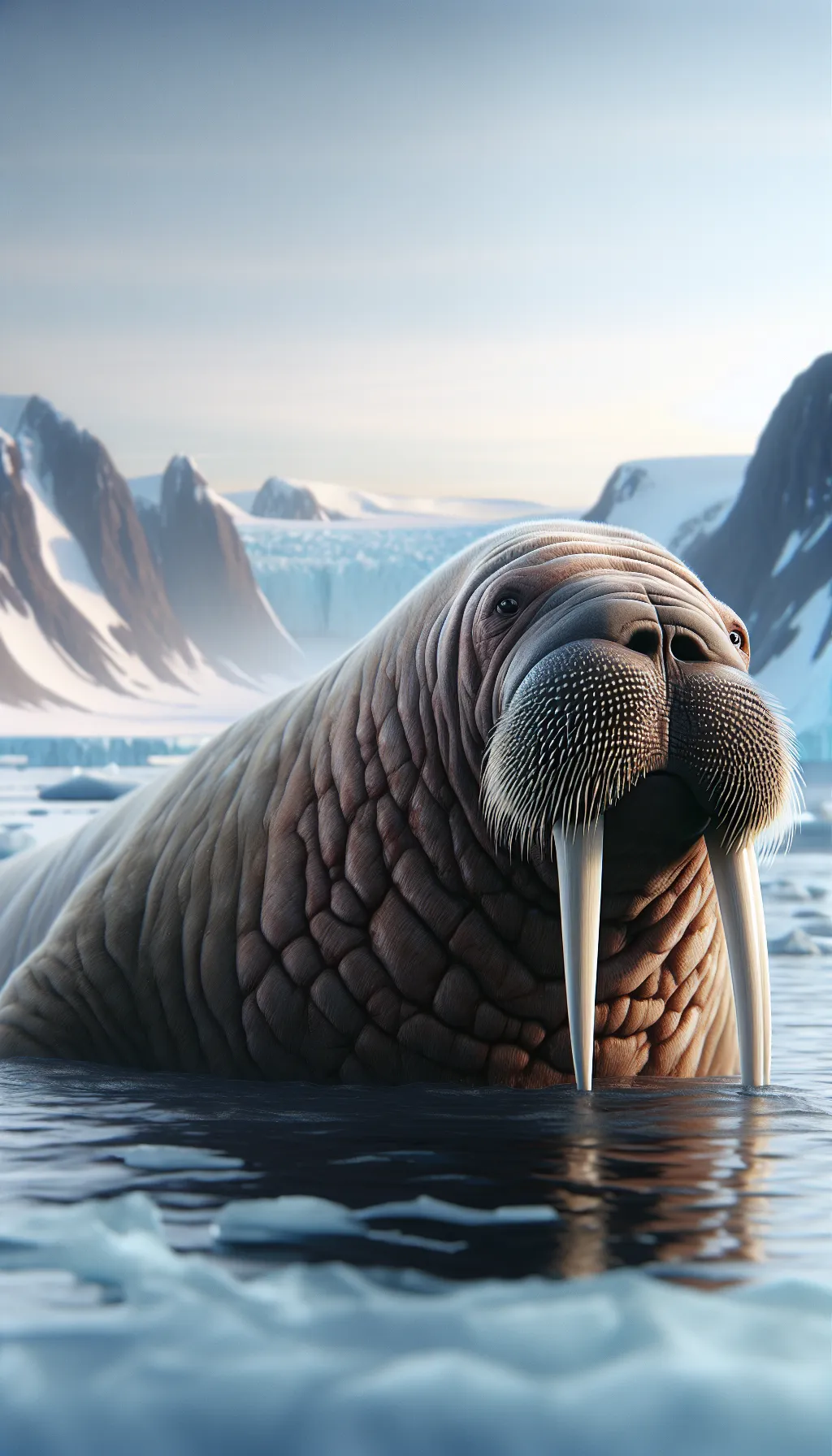
| Walrus | |
|---|---|
| Size | Up to 11 feet (3.3 meters) in length |
| Weight | Up to 3,700 pounds (1,678 kilograms) |
| Speed | Speed: 15 mph (24 km/hr) |
| Key Strength | Tusks used for defense and dominance during mating season |
| Biggest Weakness | Slow movement on land |
| Scientific Name | Odobenus rosmarus |
| Family | Odobenidae |
| Habitat | Arctic Ocean and subarctic regions |
| Geography | Northern Hemisphere |
| Diet | Clams, mussels, and other shellfish |
| Lifespan | 40 years - 50 years |

The Walrus
The Walrus is a large marine mammal that belongs to the pinniped family. It is known for its distinctive long tusks, which can grow up to three feet in length. With a bulky body covered in thick blubber, the Walrus can weigh up to 4,000 pounds. They have a flabby appearance with wrinkled skin, which is often pale brown or pinkish-gray in color. Walruses use their strong flippers to navigate in water and haul themselves onto ice floes. These social creatures are found in the Arctic regions, where they gather in large groups called haulouts.
Fun Fact: One interesting fact about Walruses is that they are excellent divers, capable of descending to depths of nearly 300 feet in search of their preferred prey - clams, mollusks, and other bottom-dwelling creatures.
| Walrus | |
|---|---|
| Size | Up to 11 feet (3.3 meters) in length |
| Weight | Up to 3,700 pounds (1,678 kilograms) |
| Speed | Speed: 15 mph (24 km/hr) |
| Key Strength | Tusks used for defense and dominance during mating season |
| Biggest Weakness | Slow movement on land |
| Scientific Name | Odobenus rosmarus |
| Family | Odobenidae |
| Habitat | Arctic Ocean and subarctic regions |
| Geography | Northern Hemisphere |
| Diet | Clams, mussels, and other shellfish |
| Lifespan | 40 years - 50 years |
Match Highlights
Walrus Matchups
We use AI to simulate matchups between the Walrus and other animals. Our simulation considers size, strength, and natural predatory behaviors to determine the most likely outcome.
Walrus: Diet, Predators, Aggression, and Defensive Behaviors
What do Walruses eat?
Walruses primarily feed on a diet of clams, mussels, shrimp, crabs, and occasionally fish and seals. They use their sensitive whiskers, called vibrissae, to detect food on the ocean floor. Walruses are known to suck clams out of their shells using their powerful suction abilities.
Do Walruses have any predators?
While adult walruses don't have many predators due to their large size and tough skin, they are sometimes targeted by polar bears and killer whales, especially calves or weak individuals. However, human hunting has been the biggest threat to walrus populations in recent years.
Are Walruses aggressive?
Walruses are generally not aggressive towards humans unless provoked or threatened. However, males can exhibit aggressive behaviors during the breeding season when vying for dominance and access to females. These displays often involve vocalizations, tusks brandishing, and physical confrontation between males.
Do Walruses engage in fights?
During mating season, male walruses will engage in physical fights to establish dominance and breeding rights. These conflicts can involve tusk-to-tusk combat, pushing and shoving, and vocal displays. The winner of these battles will usually have access to a harem of females to mate with.
How do Walruses defend themselves?
Walruses have several defense mechanisms to protect themselves from predators and threats. Their most prominent defense is their large tusks, which are used for digging into the ice, defense against predators, and dominance displays. In addition to their tusks, walruses can also vocalize loudly, create loud noises underwater, and inflate their bodies to appear larger and more intimidating.
What is a walrus's biggest weakness in a fight?
A walrus's biggest weakness in a fight is its relatively slow movement on land compared to its agility in water. While walruses are strong swimmers and can use their tusks effectively underwater, they can be slower and less maneuverable on land, making them vulnerable to attacks from predators like polar bears or hunters.
Fun Fact: Unlike most seals and sea lions, Walruses have extremely sensitive vibrissae, better known as whiskers, which they use to detect vibrations in the water. These whiskers help them locate food and navigate through the ocean depths.
Fun Fact: Walruses are known for their unique vocalizations, which include various sounds such as whistles, barks, and deep roars. These distinct sounds are used by walruses to communicate with other members of their social groups and during mating rituals.



